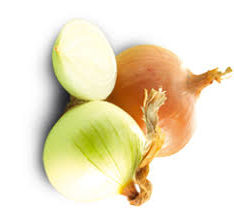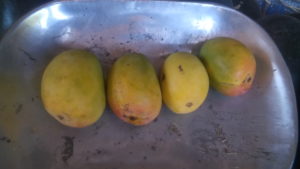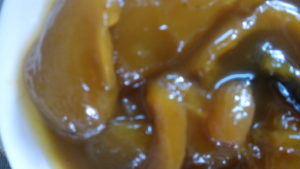How to preserve Fish Roe the Parsi Way.
Preserved Fish Roe — Aatheli Garab
This is for the many readers, especially Parsis, who have written to ask how one can preserve Roe bought during the season.
I am sharing the process described by my Great Grandmother, Dosibai Wankadia.
The method used in her time is prior to the advent of the various modern cheese-presses, heat-dryers and other kitchen gadgets and therefore, use of traditional straw basket(s) and weights. The reader may use the gadgets he has, if any.
A WORD OF CAUTION TO THE READER. My Great-Grandmother informs that the salted Garab/roe available in the market is merely that —Salted. It has does not have the shelf life of the Aatheli (Preserved) Garab/Roe. The Salted Roe available in the market may be used for immediate cooking. The salted Roe has to undergo the undermentioned process before it can be preserved and retained in your larder for months.
PRESERVED FISH ROE — AATHELI GARAB
INGREDIENTS:
1 ½ kg fish roe (preferably Bhing fish/Giant Herring), it should be very fresh;
Salt enough to sprinkle on and fill the sacs in the roe;
1 straw basket or as required;
1 grinding stone or heavy weights as required;
METHOD:
Wash the roe,
Sprinkle salt on the Roe (Sea Salt/ Sel de Mer preferred),
Next, Also fill the hollow sacs in the roe with a lot of salt (the hollow in the roe, we, Parsis, call the stomach {pait} of the roe in Gujarati);
Place all the roe in straw basket(s),
Cover the roe with a plantain/banana leaf,
Place grinding stone/ weights on the leaf to weigh it down, so as to drain all the liquid from the Roe (like one would do to make paneer/cheese),
Let the Roe discharge its water for three days,
Remove the Roe from basket(s) after three days,
Now you have Aatheli Garab (Preserved Roe) which you can use for frying or cooking .
IF you want to preserve the Roe for a months/a year or more or to PICKLE THE ROE, you have to further process it :

Front: After removing Memebrane
After the first 3 days:
Wash the Roe well,
Remove the various blood vessels and nervous matter that are sticking to the Roe,
Separate the roe into its natural segments,
Wipe each segment dry with a soft dry cloth taking care not to break up the Roe,


Mix a little turmeric, salt and oil,
Rub the mixture all over the Roe segments,
Dry these under a light sunlight OR
Put it in a straw basket and hang it over your stove for three days OR until it is completely dry.
The Aatheli Garab may now be preserved until you require to use it.
This Garab (Roe) may now be used to make Garab Nu Achaar (Pickled Roe).
]]>
A Quick and Easy Recipe
250 gms. Potatoes (skinned, diced and then boiled);
2 tablespoons ghee or oil (Ghee preferred);
¼ teaspoon ghee or oil (Jeera);
A pinch of powdered Asafetida (Hing );
1 teaspoon dry Coriander powder (Dhania powder);
1/8th teaspoon turmeric (just a little on the tip of a teaspoon);
1 teaspoon Chaat Masala;
1 teaspoon Dry Mango Powder (Amchur);
½ teaspoon chili powder or to your taste;
1 teaspoon Garam Masala;
Salt to taste.
A few sprigs of Fresh Green Coriander leaves (plucked off the stalks and chopped fine).
Method:
Heat the ghee on a high flame taking care not to let it smoke;
Add A pinch of powdered Asafetida (Hing ) and the cumin seeds (Jeera),
When the seeds begin to splutter:, add the boiled and diced Potatoes,
Fry for a few seconds,
Add: 1 teaspoon dry Coriander powder (Dhania powder);
1/8th teaspoon turmeric (just a little on the tip of a teaspoon);
1/8th teaspoon turmeric (just a little on the tip of a teaspoon);
1 teaspoon Chaat Masala;
1 teaspoon Dry Mango Powder (Amchur);

½ teaspoon chili powder or to your taste;
1 teaspoon Garam Masala;
Salt ;
IMMEDIATELY REDUCE THE FLAME TO LOW;
Gently stir the contents of the cooking vessel to ensure all the Potatoes are well-coated with the masalas,
Then raise to medium flame, cover vessel and let cook for a minute or so.
Take care that the potatoes do not stick to the bottom of the pan or burn,
Put the flame off and sprinkle the Potatoes with fresh coriander and mix.
Pack up your office lunch to eat with any unleavened bread of your choice.
]]>
A quick and easy recipe for people in a hurry.
15-Minute-Cumin-Potatoes – Jeeraloo, are an office favourite at Dhiraj’s work-place. The recipe from start to finish takes 15 minutes or less and is very easy to make.
Dhiraj Srivastav resides in Mumbai away from his parents and other members of his joint-family. Over a period of time he has developed tasty Vegetarian recipes that take 15 minutes or less to cook. The girls in the office including yours truly, now await Dhiraj’s daily lunch box.
Today we had his specially made 15-Minute-Cumin-Potatoes — Jeeraloo (in Hindi) and 5-grain purees, soft, tasty yum purees to go with the potatoes.
The 15-Minute-Cumin-Potatoes – Jeeraloo is best with purees but taste delicious with any unleavened bread — Roti, Chapatti, Tortilla, Phulka, Dhebras.
INGREDIENTS:
250 gms. Potatoes (skinned, diced and then boiled);
2 tablespoons ghee or oil (Ghee preferred);
1” inch piece of Ginger root, peeled and cut fine;
1 teaspoon cumin seeds;
2 small onions, chopped;
2 small tomatoes, chopped with skin and seeds;
1/8th teaspoon turmeric (just a little on the tip of a teaspoon);
½ teaspoon chili powder or to your taste;
1 teaspoon Dry Mango Powder (Amchur)
salt to taste.
Three sprigs of fresh coriander, (remove leaves and chop them).
Method:
Heat the ghee on a high flame taking care not to let it smoke;
Add the cumin seeds (Jeera),
When the seeds begin to splutter:
Add the green chilies and Ginger,
Fry for a second or two,
Add the chopped onions,
Fry till golden brown,
Add chop tomatoes, Turmeric and chili powders,
Fry for until the tomato softens, mash the mixture while frying,

Add dry mango powder (Amchur) and salt,
Stir for a second or two,
Lastly add the boiled and diced potatoes,
Stir till potatoes are well coated with the fried mixture,
Add fresh coriander,
Mix,
Cover and cook for about 2 ½ to 3 minutes; taking care that the potatoes do not stick to the bottom of the pan or burn,
Take off the heat.
The potatoes are ready to pack for your office lunch.
]]>
The Feature Image at the top of this Recipe of ‘Country Captain Chicken’ is taken from Humayun Hassain’s third and last series of Anglo Indian Cooking. The Recipe itself is from my Family recipes as handed down.
THIS RECIPE WAS ADDED TO THE FAMILY RECIPE BOOK AROUND THE SAME TIME IN MID-1850S WHEN THE DISH WAS IN ITS INITIAL PRISTINE STAGE.
LATER VERSIONS ARE SPOKEN OF, AT THE END OF THE RECIPE.
I HIGHLY RECOMMEND THE SIMPLICITY, TASTE AND SPEEDY COOKING OF THE ORIGINAL RECIPE.
COUNTRY CAPTAIN — A Parsi Chicken Recipe from India
Country Captain, really!! I laughed when I first heard the name. A friend asked me whether I had heard of this dish. I rolled my eyes. “Country Cousin Chicken is supposed to be very tasty”, she informed me, “but very difficult to make; and I want the recipe”. I let it pass then. Imagined it was yet another meat and Masala thing.
When I asked them at home and got to taste the dish. I wanted more. Unlike on the wood-stoves, today with the mixer and gas and pressure cookers it is very easy to make. Amongst the Parsis, the Country Captain Chicken does not contain the curry powder and other spices, nuts and dry fruits thrown in by the European and especially American chefs. It is more simple and more tasty . The name suggests a very tasty (deserving of a salute), straight laced quick and easy cooking out in the country where facilities were few and far between. USA and a few others claim origin of the dish, but Could it have been a Parsi’s dry sense of humour ?! Country Cousin!!
I have changed the weights and measures of yesteryear (Ser and Ratal and Tola) to the metric system we use today. The recipe I give you is noted in the mid- 1800s about the time the Country Captain Chicken gained popularity and traversed the three Oceans – Indian, Atlantic and Pacific- to the Southern USA via the British Isle, where it changed shape and colour and so, the flavours and became quite elaborate and developed a completely different and more spicy character, Arcadian in Nature (today called “Cajun Cuisine’) .
Some weights prescribed are most picturesque. The amount of saffron is described as ‘equal to the weight of a 2 Anna coin’.
After sharing this recipe with you a week ago, curiosity gained me a few interesting facts about this recipe with an unusual name. I thought I’d share these with you and so, edited the publication, today. Country Cousin has had quite a history; steeped in the romance of sailing ships and exotic trade destinations. Do check at the end of the recipe.
INGREDIENTS:
1 young layer, (chicken /duck/ any fowl, young enough to still lay eggs);
2 large or four medium sized onions (preferably white);
450 Gms ghee/ cooking medium of your choice but the taste will change according to the medium used. (The original recipe calls for ghee);
1 heaped teaspoon salt;

5 grams saffron strands;
2 large dry Red Chilies.
METHOD:
Grind the red chilly to powder;
Separately grind the saffron strands;
Slit the fowl down the underside,
Remove all the organs from within;
Wash the chicken clean,
Keep it whole.
Grate half the quantity of the onions and keep aside;
Cut fine the other half quantity of onions and fry them till golden brown stirring all the while.
Keep aside the fried onions for garnish;

Retain the Ghee in the same pot.
In the same pot, in the same remaining ghee,
Fry the grated onions till pink,
Add the ground chillies and Saffron to the pinked onions;
Add the fowl and salt;
Fry for a few minutes, sealing the fowl on all sides;
Cover and let the fowl cook;
Add a liter of water, cover and cook;
Stir from time to time and turn the chicken over so it is done on all sides but does not burn.
IF:
cooked in a pressure cooker reduce the quantity of water to 250 ml or as much as you would usually add, depending on the cooker.
Once the fowl is cooked, well done and is moist with a thick gravy say about 100 to 200ml,
Take the whole chicken out of the pot and Sprinkle the fried onions over it.
Serve hot with white crisp bread/ white rice and lettuce and tomato salad.
Mystery and Romance of the Country Cousin
By the mid-Nineteenth Century, ‘The Country Cousin’ was a popular enough meal for the recipe to see publication in Miss Leslie’s New Cookery Book in Philadelphia, America in 1857 —- the year of the Indian Sepoy Mutiny. The dish obviously pre-dates the publication of its recipe. In the early 20th century, it was served as part of his Menu by Alessandro Filippini, at Delmonico’s a restaurant on Wall Street, the Country Cousin’s simplicity was upgraded (?) to become a more elaborate ‘Cousin’.
In time, Country Cousin fan, President Franklin D. Roosevelt introduced General George Patton to the dish who became an instant adherent of the dish and today, two centuries since its origin — in 2000s — the Country Cousin becoming part of U.S. Army’s Meal, Ready-To-Eat field Rations; all in honour of Patton.
The history of the dish is replete with romance of a “mysterious captain drifted into Savannah, (Georgia) via the spice trade and entrusted his recipe to southern (American) friends”; to “a British sea captain who originally introduced the dish in Charleston”. Savannah has always fought Charleston on claiming the origin of the Country Captain.
Documents also, points to probability of the dissemination of the recipe to the European and American Continents by the ‘country captains’ of Indian Merchant or “country ships” and the staple chicken curry on these trade ships.
In the first, still extant documentation of the recipe in the 1857 publication, Miss Leslie attributes Country Cousin is an “Indian dish and a very easy preparation of curry.” Leslie explains the name “Country Captain” signifies “a captain of native troops (or Sepoys) in the pay of England; their own country being India, they are there called generally the country troops.” Leslie ‘supposed’ the dish was “introduced at English tables by a Sepoy officer.”
Infinite variations stretched from inclusion of orange juice and tomatoes to currants, thyme and Curry Powder; from cooking it dry in a skillet to a curry eaten with rice; from retaining whole to serving it cut up in pieces (Leslie records a full, uncut chicken).
Ultimately, it all boils down to the original 18th Century recipe — Chicken with a few Indian spices including Saffron (variations replace saffron with Turmeric Powder) — and the baroque early American (South) dating from nineteenth and 20 the Centuries (variations include adding white wine, bacon, chicken broth, celery, peanuts, almonds, currants, tomatoes, zucchini, cauliflower, peas, turmeric, mace, allspice, citrus, flour, butter, cream, a full spectrum of Curry ingredients and myriad others and omitting two main ingredients, ginger and saffron).
To demystify the Country Cousin in its place of origin and recipe would be to take away its romance and appeal. Cook it the Parsi way and await the accolades of your family and guests.
]]>Ambakalyo is not a preserve it is a recipe for a Parsi Ripe Mango sauce quick and easy sauce recipe. Ambakalyo is a delightful, light and happy dish to be served in the heat of summer , the height of the Mango season in India. Ambakalyo is delicious; eaten with red/white rice or any bread — whether baked in an oven or cooked on a griddle including tortillas, chapattis, corn bread and pita . The bright orange colour of the finished dish of the Mango Ambakalyo only adds to its appeal. Ambakalyo, by itself, makes for a popular meal in a Parsi household and saves the mother from long hours in the grueling heat of the kitchen.
Ambakalyo also makes a scrumptious sauce for all roast meats and fowl — especially Roast Chicken and Pork; if you are so inclined to use it. The sweet and slightly tart-chili tang of the sauce goes a long way in enhancing the flavours of your dish. Visually too, the translucent orange colour , reminder of scenic sunsets, and the thick consistency of the sauce is tremendously appealing.
Mango is the traditionally accepted fruit to make an Ambakalyo and the name itself “Amba” meaning ‘Mango’ in Gujarati and ‘Kalyo’ meaning ‘Grated, Shredded, made into a Paste’ suggests that the dish is essentially made from Mangoes cooked to the consistency of a thick paste. The ingredients and the Gujarati name suggests that the Parsi-Zoroastrians of India learnt to make the Ambakalyo after migrating to India. However, the word ‘Kalyo’ is no longer found either in Persian or Gujarati; but in Filipino the word “Kalyo” still exists the meaning has declined and is used to denote ‘a Shredder’.
If you are inclined to innovate, like I am, you may add oranges or other citrus fruit, or pineapple or green apple or passion fruit (yellow or purple) any tart fruit of your choice to the recipe at the stage where you introduce the sliced Mangoes into the melted Jaggery/sugar mixture.
Replacing Mangoes, altogether, with another tart and fleshy fruit or a combination of fruits would give you a Orangekalyo, Citrouskalyo, Pineapplekalyo, or green-applekalyo or passion-fruitkalyo or Kalyo of your choice. The entire Recipe will remain the same except that the Mango will be added onto or replaced by another fruit. This would make an equally delicious sauce and a seasonal sauce, at that!

INGREDIENTS:
6 Ripe Mangoes (Alfonso or Pairi preferred; but you may use your favourite);
250 Gms (½ lb) pearl onions (can replace with small red onions or diced regular onions. The taste with each will differ but all taste good);
250 Gms Jaggery as per original recipe; (or Sugar, if you prefer. In which case take 200 Gms of sugar);
3 cloves;
1 inch piece of cinnamon;
Juice of 1 lemon;
1 tsp chili powder;
A pinch of Turmeric powder;
1 clove Garlic;
¾ inch piece of Ginger.
METHOD:
Peel and slice the Mangoes (you may also use the seed),
Slice the Ginger and Garlic,
If using large onions, quarter them,

Fry the onions lightly and place aside,
If using small onions fry them whole,
Now, boil the jaggery/sugar in 2 spoons of water,
Add chili powder, Turmeric Powder, Ginger, Garlic, Cloves and Cinnamon.
Boil till all the jaggery/sugar has melted,
Then, add the mangoes and onions and cook boil for 5 minutes,
Simmer for another 20 minutes or until mango and seed orange and translucent.
Your Ambakalyo is ready to eat.
SERVE: Hot or cold with chapattis, preferably made of rice flour.
]]>